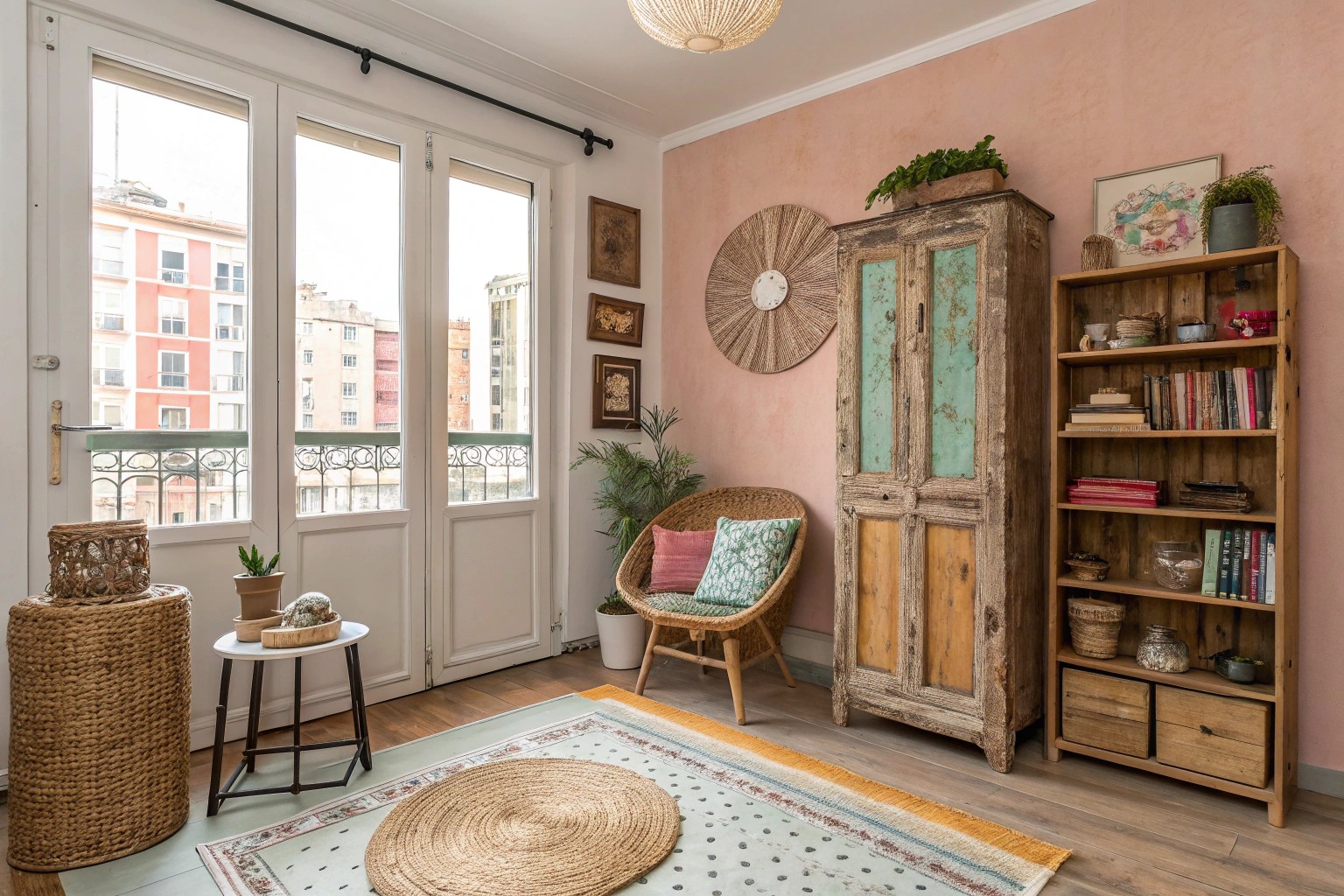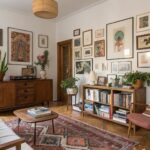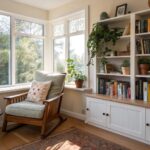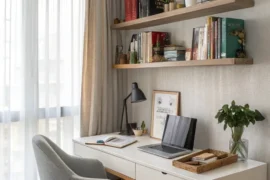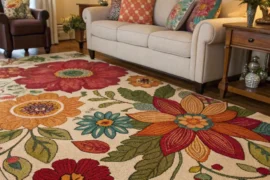There’s something magical about transforming forgotten objects into stunning design elements. As spaces grow smaller and sustainability becomes more important, upcycling offers a perfect solution for creating unique, personalized decor while reducing environmental impact. Throughout my years designing spaces, I’ve found that the most cherished items are often those with the best stories—something that upcycled pieces deliver in abundance. This guide will help you discover the art of creative upcycling, whether you’re looking to add character to your home, reduce waste, or simply express your creativity in new ways.
Understanding the Upcycling Movement

Upcycling goes beyond basic recycling by transforming waste or unused materials into products of higher quality or value. This practice has experienced a real boom in recent years, evolving from a frugal necessity to a design movement celebrated for its creativity and environmental benefits.
Unlike recycling, which breaks down materials, upcycling preserves the integrity of items while giving them new purpose. When you upcycle, you:
- Divert materials from landfills
- Reduce demand for new raw materials
- Decrease energy consumption and carbon emissions
- Create one-of-a-kind pieces with character and history
- Save money while creating high-value items
The philosophy behind upcycling aligns perfectly with sustainable design principles. There has been a significant shift in how upcycled pieces are perceived—they are no longer viewed merely as budget-friendly alternatives but are actively sought after for their distinctive character and sustainability credentials.
Finding Your Upcycling Materials
The first step in successful upcycling is developing an eye for potential. Where others see trash, you’ll learn to see possibility. In my experience, the most successful projects often begin with items that appeared hopeless to the untrained eye.
Prime Hunting Grounds for Materials
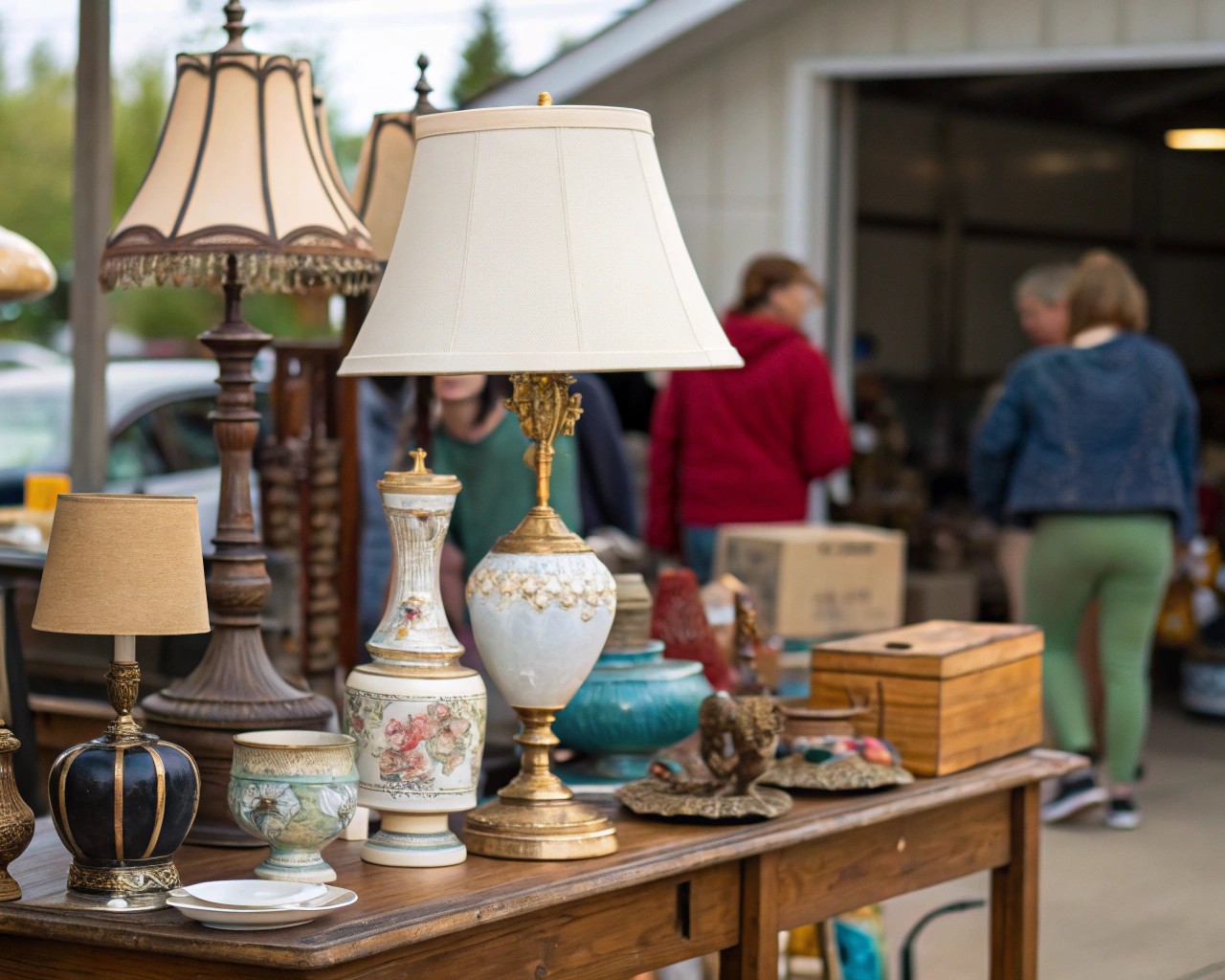
| Source | Best For Finding | Tips |
|---|---|---|
| Thrift Stores & Estate Sales | Furniture, frames, decor items | Visit regularly; inventory changes quickly |
| ReStore (Habitat for Humanity) | Building materials, fixtures, furniture | Great for architectural salvage |
| Online Marketplaces | Virtually anything | Search “free,” “vintage,” or “for parts” |
| Construction Salvage Yards | Doors, windows, lumber, fixtures | Call ahead about inventory |
| Garage/Yard Sales | Small furniture, household items | Early birds get the best finds |
| Curbside (Bulk Pickup Days) | Furniture, appliances, materials | Check municipal schedules |
| Family Attics/Basements | Vintage pieces with sentimental value | Ask relatives before they discard items |
When evaluating potential materials, look beyond current appearance and focus on structural integrity, material quality, and transformative potential. You’ll be surprised at what can be saved with a little creativity and effort.
Room-by-Room Upcycling Guide
Living Room Transformations
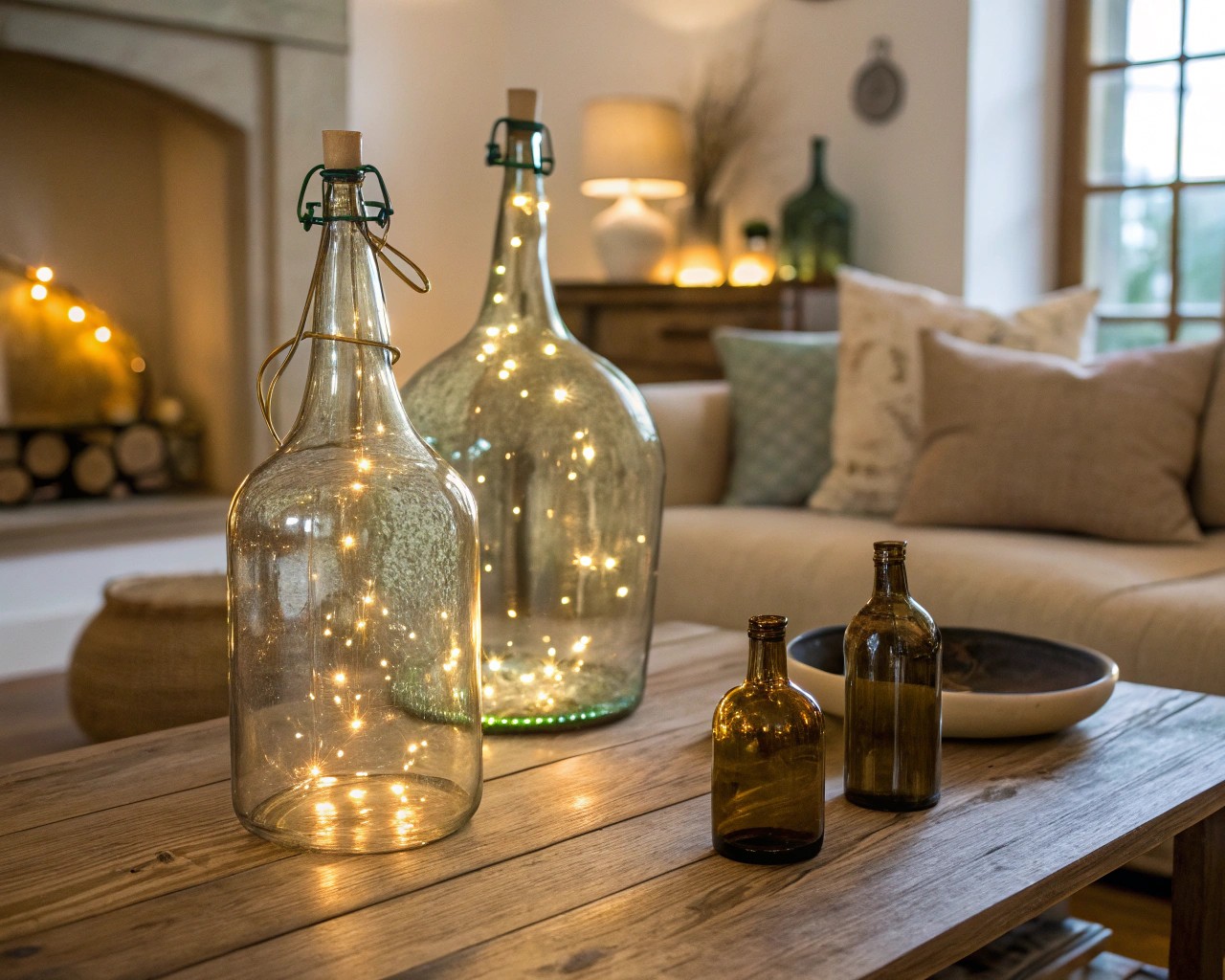
The living room offers countless opportunities for statement upcycling projects that become conversation pieces while serving functional needs.
Popular Living Room Upcycling Projects:
- Pallet Furniture: With good sandpaper, paint, and craftsmanship, pallets transform into stylish coffee tables, shelves, or sectional seating.
- Old Ladder Repurposing: Mount horizontally on a wall for unique bookshelves, or use as clothing/blanket storage in living spaces.
- Glass Bottle Creations: Clean wine bottles become table decorations with sand and candles, while groups of bottles can form rustic-modern chandeliers.
- Door & Window Projects: Refinished old doors make stunning coffee tables, while vintage windows become wall art or photo displays.
For instance, one client’s living room gained a unique focal point from an old wooden ladder mounted horizontally as a shelf. Costing under $20, this simple upcycle drew compliments from every visitor and showcased the potential for transformation.
Bedroom Upcycling Ideas
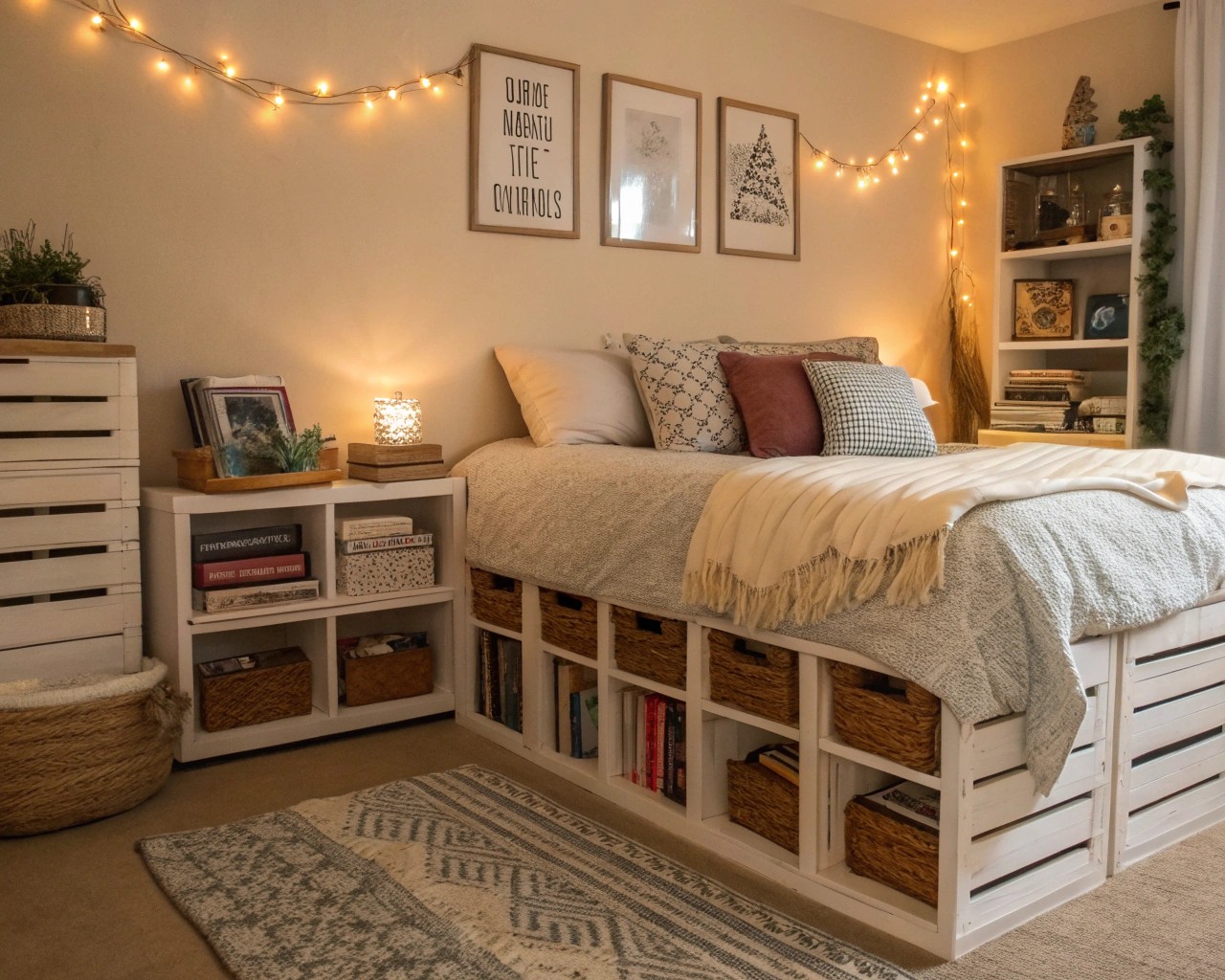
Bedrooms benefit enormously from upcycled elements, which add warmth and character to what might otherwise be a utilitarian space.
Headboard Alternatives:
- Antique doors (sand, stain, mount securely)
- Old shutters (painted or natural)
- Vintage window frames
- Reclaimed wood panels
Storage Solutions:
- Suitcase nightstands
- Crate wall storage
- Dresser transformations with fresh paint and updated hardware
Bedrooms can also benefit greatly, like in the case of a client passionate about vintage travel but on a tight budget. An antique door became a headboard, a curbside dresser was refinished, and vintage suitcases served as nightstands, achieving a high-end look for under $300.
Kitchen & Dining Upcycling
While kitchens present unique challenges due to functional requirements, they offer remarkable opportunities for creative upcycling:
Cabinet Transformations:
- Paint can work wonders on outdated cabinets
- Remove doors for trendy open shelving
- Update with new handles or knobs for a fresh look
Table and Seating Ideas:
- Transform an old trunk into a vintage coffee table by adding casters and a glass top
- Create modular shelving from stacked wooden crates
- Repurpose an antique door into a rustic dining table with industrial legs
Kitchens also offer opportunities, as seen in a memorable project involving a young family’s farmhouse renovation. A weathered oak barn door, instead of being discarded, was cleaned, preserved, fitted with modern legs, and transformed into a statement dining table, becoming the heart of their home.
Garden and Outdoor Upcycling
Outdoor spaces are perfect for upcycling experiments, as weather patterns often create a natural patina that enhances character over time.
Creative Garden Upcycling Projects:

- Vertical Gardens: Transform wooden pallets into living walls for small spaces
- Unique Planters: Repurpose old boots, vintage wheelbarrows, galvanized tubs, or tin cans
- Garden Borders: Use glass bottles, broken pottery, or salvaged materials to create distinct garden edges
- Water Features: Turn recycled containers and salvaged materials into mini fountains or birdbaths
- Garden Lighting: Create enchanting illumination with string lights in glass bottles or punched tin can lanterns
Case Study: Small Garden Transformation
Recently, I helped transform a tiny urban courtyard into a lush retreat using almost entirely upcycled elements. We created vertical gardens from wooden pallets, fashioned seating from repurposed furniture, and used an old clawfoot tub as a statement planter. The entire transformation cost less than $500 but created a magazine-worthy outdoor living space that’s been featured in local home tours.
For small gardens, vertical space is essential. “By embracing repurposing and reuse,” I tell my clients, “your garden becomes a personalized, eco-friendly retreat filled with character, color, and sustainability”.
Materials Deep Dive: Working with Popular Upcycling Materials
Wooden Pallets: The Upcycling Superstar
Pallets have become the poster child for upcycling, and with good reason. They’re readily available, often free, and incredibly versatile. I’ve used them for everything from outdoor furniture to indoor statement pieces.
Preparation Steps for Pallet Projects:
- Inspect for damage and remove protruding nails
- Sand thoroughly to prevent splinters
- Clean with mild soap and water
- Apply sealer for indoor use
- Paint or stain for finished appearance
Safety Note:
Always check for stamps indicating treatment method. Use only heat-treated (HT) pallets for indoor projects, never those marked MB (methyl bromide).
Old Doors and Windows
Architectural salvage pieces add immediate character to any space. The patina of age is something that simply can’t be manufactured.
Door Transformation Ideas:
- Headboards for beds
- Dining or coffee tables with new bases
- Room dividers in open floor plans
- Wall art or photo displays
- Outdoor garden features
In my design studio, we maintain a small collection of vintage doors and windows, finding that these architectural elements often become the anchor pieces around which entire room designs evolve.
Glass Bottles and Jars
Glass containers offer endless upcycling possibilities with their varied shapes, sizes, and colors.
Creative Uses for Glass:
- Pendant lighting fixtures
- Vases and terrariums
- Soap dispensers
- Candle holders
- Wind chimes for gardens
Glass containers offer endless possibilities. For example, a client’s collection of blue wine bottles was transformed into a stunning dining room chandelier for under $100, creating a custom fixture with high perceived value.
Step-by-Step Project: Pallet Coffee Table
Let me walk you through one of the most requested upcycling projects in my workshops:
Materials Needed:
- 2 wooden pallets (heat-treated)
- Sandpaper (80, 120, and 220 grit)
- Pallet disassembly tool or crowbar
- Wood screws
- 4 casters (optional)
- Wood stain or paint
- Polyurethane sealer
- Safety gear (gloves, goggles, mask)
Process:
- Disassemble pallets or use whole depending on your design
- Sand thoroughly, starting with rough grit and moving to finer
- Clean dust with tack cloth
- Assemble table structure using screws and brackets
- Add casters if desired for mobility
- Apply stain or paint as desired
- Finish with 2-3 coats of polyurethane for protection
- Allow to cure fully before use (24-48 hours)
This project typically costs under $50 but creates a coffee table that would retail for $300-500 with similar character and quality.
The Business Side of Upcycling
For those interested in moving beyond personal projects, upcycling can become a viable business. I’ve worked with several clients who started with DIY projects and grew into successful ventures selling unique pieces.
Selling Upcycled Pieces
| Platform | Best For | Commission/Fees |
|---|---|---|
| Etsy | Reaching global audience | 5% transaction fee + listing fees |
| Local Craft Fairs | Building local clientele | Booth rental ($50-500) |
| Showcasing process and results | Free (except promotion) | |
| Specialty Boutiques | Higher-end pieces | 40-60% commission typical |
| Farmers Markets | Small to medium items | Weekly booth fee ($25-100) |
When pricing your work, remember to factor in materials, time (even at modest rates), uniqueness, and market comparison. Many beginning upcyclers undervalue their creativity—don’t make this mistake!
Case Study: From Hobby to Business
One of my workshop attendees began by transforming pallets into garden furniture for his own backyard. After numerous requests from friends, he started selling pieces at local markets. Three years later, he runs a successful upcycling business specializing in custom furniture made from reclaimed materials, employing two assistants and maintaining a waiting list for commissions.
Sustainability Impact: Why Upcycling Matters
The environmental benefits of upcycling extend far beyond simply keeping items out of landfills. When we repurpose furniture, we’re also:
- Reducing the demand for new manufacturing
- Decreasing transportation emissions from new goods
- Preserving the embodied energy already invested in existing objects
- Reducing the extraction of virgin materials
- Creating awareness about consumption patterns
In one recent project with Fordham University, we coordinated the removal and repurposing of 300 sets of furniture worth between $200,000-$300,000—all diverted from landfills. This type of large-scale reuse demonstrates how upcycling principles can extend beyond home decor to institutional settings.

